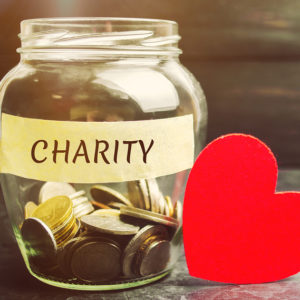As 2020 came to a close, Congress finally agreed on COVID-19 relief measures—and President Trump signed them into law—after eight long months of political gridlock that ignored the hardships facing many American families. No one wants to imagine the additional pain Americans would have endured this past year if not for the charitable and private sector groups and individuals who stepped up quickly to support our communities at the onset of the pandemic. Their success, amid so many challenges and unknowns, reminds us why private charity is the best first line of defense and a critical lifeline when disaster strikes.
When many Americans were forced to shelter-in-place, and business closures triggered millions of job losses earlier this year, federal lawmakers passed an initial COVID-19 relief package two months after the coronavirus reached U.S. shores. But then politics, bureaucracy, and gridlock took over. In contrast, private philanthropy and community groups immediately got to work and have collaborated with the efficiency and creativity that we have come to expect from them. They acted early, adapted, and implemented changes that filled the gaps—getting resources into the hands of those in need and thus ultimately saving lives.
While we need a fully functioning government capable of acting quickly during a national crisis, the federal government’s response to the COVID-19 crisis has been slow, inefficient, and inadequate. The pandemic has highlighted why we need a strong, effective charitable sector that can outpace the slowness of bureaucracy. Charitable giving and volunteers powered the emergency response to the COVID-19 pandemic as many nonprofits found themselves on the frontlines.
While we do not have all of the data on 2020 charitable giving yet, early survey data show giving has soared. Private foundations, community foundations, and others have used charitable giving vehicles, like donor-advised funds, to speed up and maximize donations to local and national groups that are meeting the basic needs of those who were hit hardest: providing food, shelter, employment opportunities, and healthcare as well as supporting medical research and vaccine development.
For example, weeks before the first stimulus checks reached American households, funders around the country launched multi-million-dollar relief funds for struggling Americans. As early as mid-March, several Indiana-based foundations seeded more than $16 million to launch a COVID-19 economic relief fund that was making grants to local charities a week later. The Mercatus Center’s Faculty Director Tyler Cowen, in partnership with a number of philanthropists, launched a “Fast Grants” program in early April that has raised more than $50 million to support biomedical research to fight COVID-19. Instead of the typical, cumbersome academic funding process that could take months, the Mercatus Center program got grants into the hands of scientists in a matter of days.
As charities continue meeting the needs of Americans going into 2021, the good news is donor fatigue has not yet set in. According to research company Candid, 1,200 donors gave more than $20 billion to charities in response to the pandemic. This generosity eclipsed funding for the past few natural disasters and the 2015 Ebola virus outbreak combined. This past December, on GivingTuesday alone, individuals donors, foundations, and donor-advised funds gave an estimated $2.47 billion, a 25 percent increase from 2019’s level, for direct and local services as well as charities’ general operations to keep up with increased demand for their services.
While philanthropy can be nimble and fast, the government is neither—although there are good reasons that it takes bipartisan agreement to approve massive spending of taxpayer dollars. Political apathy, red tape, and other hurdles make quick changes at the federal level nearly impossible. It is for this reason that the government partnered with the private sector to develop COVID-19 vaccines through Operation Warp Speed. The fact that frontline workers are being vaccinated today, rather than years from now, is a testament to government officials allowing the private sector to do what it does best.
Charitable giving is a necessary and vital complement to government spending, especially during a crisis. It is also a catalyst that can prevent the need for the government to get involved in the first place. Private charity identifies problems and funds bottom-up solutions, sometimes before the public sector knows there is an issue. While government may invest in successful, privately-funded initiatives, it oftentimes does not lead the charge.
Philanthropy is an indispensable part of a strong and healthy society, and its impact is felt most in times of crisis. Private charitable giving made the difference for many families who spent the better part of 2020 waiting for more help from Washington. As we begin this new year, the pandemic presents a lesson for all Americans: when a crisis strikes, we should not wait for government, but be the first to step up and help each other.

